Publicações de Angela Klautau
Brandão, Jeovani; Carvalho, Pamela C.; Miranda, Ivan P.; Mori, Thiago J. A.; Béron, Fanny; Bergman, Anders; Petrilli, Helena M.; Klautau, Angela B.; Cezar, Julio C. Proximity-induced flipped spin state in synthetic ferrimagnetic Pt/Co/Gd heterolayers Journal Article Em: Commun Phys, vol. 8, não 1, 2025, ISSN: 2399-3650. Resumo | Links | BibTeX | Tags: Miranda, I. P.; Pankratova, M.; Weißenhofer, M.; Klautau, Angela B.; Thonig, D.; Pereiro, M.; Sjöqvist, E.; Delin, A.; Katsnelson, M. I.; Eriksson, O.; Bergman, A. Spin-lattice couplings in 3d ferromagnets: analysis from first-principles Miscellaneous 2024. Resumo | Links | BibTeX | Tags: Brandão, J.; Carvalho, P. C.; Miranda, I. P.; Mori, T. J. A.; Béron, F.; Bergman, A.; Petrilli, H. M.; Klautau, Angela B.; Cezar, J. C. Insights on induced magnetic moments and spin textures in synthetic ferrimagnetic Pt/Co/Gd heterolayers Working paper 2024. Resumo | Links | BibTeX | Tags: Sousa, Osmar M; Assali, Lucy V C; Lalic, Milan V; Araujo, C Moyses; Eriksson, Olle; Petrilli, Helena M; Klautau, Angela B. Charging behavior of ZnMn2O4 and LiMn2O4 in a zinc- and lithium-ion battery: an ab initio study Journal Article Em: Journal of Physics: Energy, 2024. Resumo | Links | BibTeX | Tags: Carvalho, Pamela C.; Miranda, Ivan P.; Brandão, Jeovani; Bergman, Anders; Cezar, Júlio C.; Klautau, Angela B.; Petrilli, Helena M. Correlation of Interface Interdiffusion and Skyrmionic Phases Journal Article Em: Nano Letters, vol. 23, não 11, pp. 4854-4861, 2023, (PMID: 37235539). Resumo | Links | BibTeX | Tags: Sousa, O. M.; Sorgenfrei, F.; Assali, L. V. C.; Lalic, M. V.; Klautau, Angela B.; Thunström, P.; Araujo, C. M.; Eriksson, O.; Petrilli, H. M. Pressure effect on the structural, electronic, and magnetic properties of the battery cathode material LiMn2O4: An ab-initio study Journal Article Em: Journal of Physics and Chemistry of Solids, vol. 175, pp. 111198, 2023, ISSN: 0022-3697. Resumo | Links | BibTeX | Tags: Cathode materials, Electronic structure, LiMnO under pressure Cardias, Ramon; Silva, Jhonatan Santos; Bergman, Anders; Szilva, Attila; Kvashnin, Yaroslav O.; Fransson, Jonas; Klautau, Angela B.; Eriksson, Olle; Delin, Anna; Nordström, Lars 2023. Resumo | Links | BibTeX | Tags: 2025
@article{Brandão2025,
title = {Proximity-induced flipped spin state in synthetic ferrimagnetic Pt/Co/Gd heterolayers},
author = {Jeovani Brandão and Pamela C. Carvalho and Ivan P. Miranda and Thiago J. A. Mori and Fanny Béron and Anders Bergman and Helena M. Petrilli and Angela B. Klautau and Julio C. Cezar},
url = {https://www.nature.com/articles/s42005-025-01938-0},
doi = {10.1038/s42005-025-01938-0},
issn = {2399-3650},
year = {2025},
date = {2025-01-15},
urldate = {2025-12-00},
journal = {Commun Phys},
volume = {8},
number = {1},
publisher = {Springer Science and Business Media LLC},
abstract = {To develop new devices based on synthetic ferrimagnetic heterostructures, understanding the material’s physical properties is pivotal. Here, the induced magnetic moment (IMM), magnetic exchange coupling, and spin textures are investigated in Pt(1 nm)/Co(1.5 nm)/Gd(1 nm) multilayers using a multiscale approach. The magnitude and direction of the IMM are interpreted in the framework of both X-ray magnetic circular dichroism and density functional theory. The IMM transferred by Co across the Gd paramagnetic thickness leads to a nontrivial flipped spin state (FSS) within the Gd layers, in which their magnetic moments couple antiparallel/parallel with the ferromagnetic Co near/far from the Co/Gd interface, respectively. The FSS depends on the magnetic field, which, on average, reduces the Gd magnetic moment as the field increases. For the Pt, in both Pt/Co and Gd/Pt interfaces, the IMM follows the same direction as the Co magnetic moment, with negligible IMM in the Gd/Pt interface. Additionally, zero-field spin spirals were imaged using scanning transmission X-ray microscopy, whereas micromagnetic simulations were employed to unfold the interactions, stabilizing the ferrimagnetic configurations, where the existence of a sizable Dzyaloshinskii-Moriya interaction is demonstrated to be crucial.},
keywords = {},
pubstate = {published},
tppubtype = {article}
}
2024
@misc{miranda2024spinlatticecouplings3dferromagnets,
title = {Spin-lattice couplings in 3d ferromagnets: analysis from first-principles},
author = {I. P. Miranda and M. Pankratova and M. Weißenhofer and Angela B. Klautau and D. Thonig and M. Pereiro and E. Sjöqvist and A. Delin and M. I. Katsnelson and O. Eriksson and A. Bergman},
url = {https://arxiv.org/abs/2409.18274},
year = {2024},
date = {2024-09-26},
urldate = {2024-09-26},
abstract = {Magnetoelasticity plays a crucial role in numerous magnetic phenomena, including magnetocalorics, magnon excitation via acoustic waves, and ultrafast demagnetization/Einstein-de Haas effect. Despite a long-standing discussion on anisotropy-mediated magnetoelastic interactions of relativistic origin, including textit{ab-initio} calculations, the exchange-mediated magnetoelastic parameters within an atomistic framework have only recently begun to be investigated. As a result, many of their behaviors and values for real materials remain poorly understood. Therefore, by using a proposed simple modification of the embedded cluster approach that reduces the computational complexity, we critically analyze the properties of exchange-mediated spin-lattice coupling parameters for elemental 3d ferromagnets (bcc Fe, fcc Ni, and fcc Co), comparing methods used for their extraction and relating their realistic values to symmetry considerations and orbitally-decomposed contributions. Additionally, we investigate the effects of noncollinearity (spin temperature) and applied pressure on these parameters. For Fe, we find that single-site rotations, associated with spin temperatures around ∼100 K, induce significant modifications, particularly in Dzyaloshinskii-Moriya-type couplings; in contrast, such interactions in Co and Ni remain almost configuration independent. Moreover, we demonstrate a notable change in the exchange-mediated magnetoelastic constants for Fe under isostatic compression. Finally, the conversion between atomistic, quantum-mechanically derived parameters and the phenomenological magnetoelastic theory is discussed, which can be an useful tool towards larger and more realistic dynamics simulations involving coupled subsystems.},
keywords = {},
pubstate = {published},
tppubtype = {misc}
}
@workingpaper{brandão2024insights,
title = {Insights on induced magnetic moments and spin textures in synthetic ferrimagnetic Pt/Co/Gd heterolayers},
author = {J. Brandão and P. C. Carvalho and I. P. Miranda and T. J. A. Mori and F. Béron and A. Bergman and H. M. Petrilli and Angela B. Klautau and J. C. Cezar},
url = {https://arxiv.org/abs/2404.04655},
doi = { https://doi.org/10.48550/arXiv.2404.04655},
year = {2024},
date = {2024-04-06},
urldate = {2024-01-01},
abstract = {To develop new devices based on synthetic ferrimagnetic (S-FiM) heterostructures, understanding the material's physical properties is pivotal. Here, the induced magnetic moment (IMM), magnetic exchange-coupling, and spin textures were investigated at room-temperature in Pt/Co/Gd multilayers using a multiscale approach. The magnitude and direction of the IMM were interpreted experimentally and theoretically in the framework of both X-ray magnetic circular dichroism (XMCD) and density functional theory (DFT). The results demonstrate that the IMM transferred by Co across the Gd paramagnetic (PM) thickness leads to a flipped spin state (FSS) within the Gd layers, in which their magnetic moments couple antiparallel/parallel with the ferromagnetic (FM) Co near/far from the Co/Gd interface, respectively. For the Pt, in both Pt/Co and Gd/Pt interfaces the IMM follows the same direction as the Co magnetic moment, with negligible IMM in the Gd/Pt interface. Additionally, zero-field spin spirals were imaged using scanning transmission X-ray microscopy (STXM), while micromagnetic simulations employed to unfold the interactions stabilizing the FiM configurations, where the existence of a sizable Dzyaloshinskii-Moriya interaction is demonstrated to be crucial for the formation of those spin textures. Our outcomes may add fundamental physical and technological aspects for using FiM films in antiferromagnetic spintronic devices.},
keywords = {},
pubstate = {published},
tppubtype = {workingpaper}
}
@article{10.1088/2515-7655/ad39dc,
title = {Charging behavior of ZnMn2O4 and LiMn2O4 in a zinc- and lithium-ion battery: an ab initio study},
author = {Osmar M Sousa and Lucy V C Assali and Milan V Lalic and C Moyses Araujo and Olle Eriksson and Helena M Petrilli and Angela B. Klautau},
url = {http://iopscience.iop.org/article/10.1088/2515-7655/ad39dc},
doi = {10.1088/2515-7655/ad39dc},
year = {2024},
date = {2024-04-03},
urldate = {2024-04-03},
journal = {Journal of Physics: Energy},
abstract = {Zinc-ion batteries (ZIB) employing aqueous electrolytes have emerged as viable successors to the widely used lithium-ion batteries (LIBs), attributed to their cost-effectiveness, environmental friendliness, and intrinsic safety features. Despite these advantages, the performance of ZIBs is significantly hindered by the scarcity of suitable cathode materials, positioning manganese zinc oxide (ZnMn2O4) as a potential solution. In this study, we describe the ZnMn2O4 (ZMO) compound focusing on its properties variations during Zn extraction and potential battery applications. For the sake of comparison, we also analyze the same properties of the LiMn2O4 in its tetragonal phase (TLMO), for the first time, motivated by a recent discovery that the substitution of Zn ions by Li in ZMO forms isostructural TLMO compound at room temperature. The study was conducted within the density functional theory (DFT) framework, where the structural, electronic, magnetic, electrochemical, and spectroscopic properties of ZMO and TLMO are investigated under various conditions. Although both systems crystallize in tetragonal structures, they demonstrate distinct electronic and magnetic properties due todifferent oxidation states of the Mn. The TLMO exhibits a narrower band gap compared to ZMO, indicating enhanced electrical conductivity. In addition, TLMO presented a lower diffusion energy barrier than ZMO, indicating better ionic conductivity. To evaluate the potential application of these materials in battery technologies, we further explored their volume changes during charging/discharging cycles, simulating Zn or Li ions extraction. TLMO underwent a significant volume contraction of 5.8% upon complete Li removal, while ZMO experienced a more pronounced contraction of 12.5% with full Zn removal. By adjusting ion extraction levels, it is possible to reduce these contractions, thereby approaching more viable battery applications. Furthermore, spectroscopy results provide insights into the electronic transitions and validate the computational findings, consolidating our understanding of the intrinsic properties of ZMO and TLMO.
},
keywords = {},
pubstate = {published},
tppubtype = {article}
}
2023
@article{doi:10.1021/acs.nanolett.3c00428,
title = {Correlation of Interface Interdiffusion and Skyrmionic Phases},
author = {Pamela C. Carvalho and Ivan P. Miranda and Jeovani Brandão and Anders Bergman and Júlio C. Cezar and Angela B. Klautau and Helena M. Petrilli},
url = {https://doi.org/10.1021/acs.nanolett.3c00428},
doi = {10.1021/acs.nanolett.3c00428},
year = {2023},
date = {2023-01-01},
journal = {Nano Letters},
volume = {23},
number = {11},
pages = {4854-4861},
abstract = {Magnetic skyrmions are prime candidates for the next generation of spintronic devices. Skyrmions and other topological magnetic structures are known to be stabilized by the Dzyaloshinskii-Moriya interaction (DMI) that occurs when the inversion symmetry is broken in thin films. Here, we show by first-principles calculations and atomistic spin dynamics simulations that metastable skyrmionic states can also be found in nominally symmetric multilayered systems. We demonstrate that this is correlated with the large enhancement of the DMI strength due to the presence of local defects. In particular, we find that metastable skyrmions can occur in Pd/Co/Pd multilayers without external magnetic fields and can be stable even near room temperature conditions. Our theoretical findings corroborate with magnetic force microscopy images and X-ray magnetic circular dichroism measurements and highlight the possibility of tuning the intensity of DMI by using interdiffusion at thin film interfaces.},
note = {PMID: 37235539},
keywords = {},
pubstate = {published},
tppubtype = {article}
}
@article{SOUSA2023111198,
title = {Pressure effect on the structural, electronic, and magnetic properties of the battery cathode material LiMn2O4: An ab-initio study},
author = {O. M. Sousa and F. Sorgenfrei and L. V. C. Assali and M. V. Lalic and Angela B. Klautau and P. Thunström and C. M. Araujo and O. Eriksson and H. M. Petrilli},
url = {https://www.sciencedirect.com/science/article/pii/S0022369722006151},
doi = {https://doi.org/10.1016/j.jpcs.2022.111198},
issn = {0022-3697},
year = {2023},
date = {2023-01-01},
urldate = {2023-01-01},
journal = {Journal of Physics and Chemistry of Solids},
volume = {175},
pages = {111198},
abstract = {LiMn2O4 is a battery cathode material with desirable properties such as low cost, low toxicity, high natural abundance of Mn, and environmental compatibility. By means of first-principles calculations, we study the structural, magnetic, and electronic properties of LiMn2O4 under ambient conditions and high hydrostatic pressures (until 20 GPa). We obtain two oxidation states for Mn, even using a cubic structure, which differ in all analyzed properties: structural, electronic, and magnetic. At P > 0, such properties were found to display a standard behavior decreasing smoothly and linearly with pressure. Furthermore, the enthalpy of cubic and orthorhombic structures under low and high-pressure conditions were examined, showing that no cubic to orthorhombic phase transition exists in all the investigated pressure range, nor is a magnetic cubic to a non-magnetic cubic phase transition possible.},
keywords = {Cathode materials, Electronic structure, LiMnO under pressure},
pubstate = {published},
tppubtype = {article}
}
@workingpaper{cardias2023unraveling,
title = {Unraveling the connection between high-order magnetic interactions and local-to-global spin Hamiltonian in non-collinear magnetic dimers},
author = {Ramon Cardias and Jhonatan Santos Silva and Anders Bergman and Attila Szilva and Yaroslav O. Kvashnin and Jonas Fransson and Angela B. Klautau and Olle Eriksson and Anna Delin and Lars Nordström},
url = {https://arxiv.org/abs/2306.07222},
doi = {10.48550/arXiv.2306.07222},
year = {2023},
date = {2023-01-01},
urldate = {2023-01-01},
abstract = {A spin Hamiltonian, which characterizes interatomic interactions between spin moments, is highly valuable in predicting and comprehending the magnetic properties of materials. A deeper understanding of the microscopic origin of magnetic interactions can open new pathways toward realizing nanometer-scale systems for future spintronic devices. Here, we explore a method for explicitly calculating interatomic exchange interactions in non-collinear configurations of magnetic materials considering only a bilinear spin Hamiltonian in a local scenario. Based on density-functional theory (DFT) calculations of dimers adsorbed on metallic surfaces, and with a focus on the Dzyaloshinskii-Moriya interaction (DMI) which is essential for stabilizing chiral non-collinear magnetic states, we discuss the interpretation of the DMI when decomposed into microscopic electron and spin densities and currents. We clarify the distinct origins of spin currents induced in the system and their connection to the DMI. In addition, we reveal how non-collinearity affects the usual DMI, which is solely induced by spin-orbit coupling, and DMI-like interactions brought about by non-collinearity. We explain how the dependence of the DMI on the magnetic configuration establishes a connection between high-order magnetic interactions, enabling the transition from a local to a global spin Hamiltonian.},
keywords = {},
pubstate = {published},
tppubtype = {workingpaper}
}
Orientados e Supervisionados por Angela Klautau
Jhonatan dos Santos Silva
Vínculo: Doutorado
Instituição: Universidade Federal do Pará (UFPA)
Laboratório: NanoMagTheo
Projeto: Em breve.

John Everton Batista Barbosa
Vínculo: Doutorado
Instituição: Universidade Federal do Pará (UFPA)
Laboratório: NanoMagTheo
Projeto: Em breve.

Lorena Coelho
Vínculo: Doutorado
Instituição: Universidade Federal do Pará (UFPA)
Laboratório: NanoMagTheo
Projeto: Em breve.

